Text to Art: Merging Language with Visual Creativity
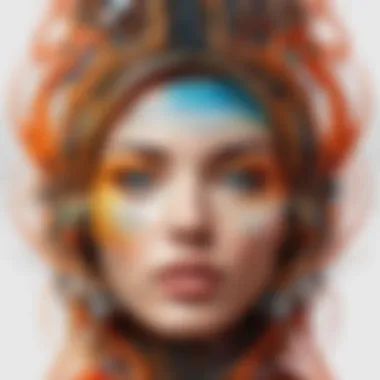
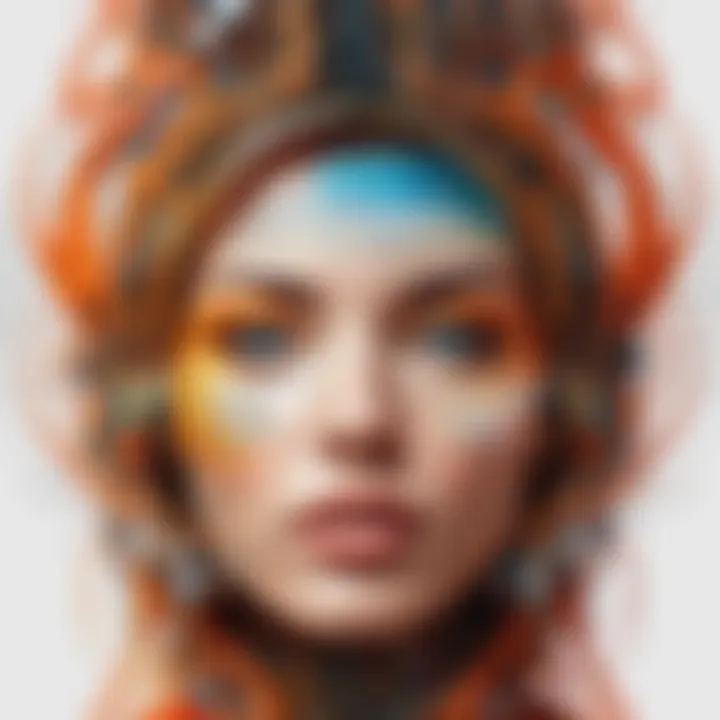
Intro
In recent years, the fusion of text and visual art has gained notable interest. The process of transforming language into artistic expression unveils rich layers of creativity. This article delves into the methodologies, implications, and future trends of text-to-art technologies. By examining how textual input becomes a visual output, we explore the relationship between linguistics and creativity.
Key Features
Methodologies Behind Text-to-Art Technologies
The technologies that facilitate the conversion of text into art are both intricate and diverse. They rely on advanced algorithms and machine learning models to interpret words and phrases, translating them into graphical representations.
- Natural Language Processing (NLP): This involves analyzing language structures. NLP helps understand the context and tone of the text, which is crucial for generating relevant artwork.
- Generative Adversarial Networks (GANs): These are a class of artificial intelligence that create new data instances. GANs play a central role in producing images based on textual prompts by pitting two networks against each other—one generates images and the other evaluates them.
- Style Transfer: This technique applies the style of one image to the content of another. By using text, it can create striking visuals that maintain the essence of the original description while adopting stylistic elements from existing artworks.
Implications on Various Fields
The implications of transforming text into art span multiple disciplines. In education, it revolutionizes how concepts are taught through visual aids. In marketing, it offers a unique way to create engaging content that resonates with audiences. Furthermore, it influences fields like data visualization and storytelling, making complex narratives accessible and visually appealing.
"The ability to convert text to visual art challenges our perception of creativity and technology."
Future Trends
Looking ahead, text-to-art technologies are continually evolving. Advances in AI will lead to more nuanced interpretations and richer visual outputs. This expansion invites greater collaboration among artists, writers, and technologists. Increasing accessibility tools promise to democratize creativity, allowing anyone to produce art with mere words.
Prolusion to Text to Art
Text to art represents a confluence of language and visual representation. As we delve deeper into this intriguing domain, it’s clear that understanding how written expressions can be transformed into visual form is essential in our modern society. The importance of this topic cannot be understated, given its implications for creativity, communication, and technology. The exploration of text to art technologies not only influences how artists conceptualize their work but also reshapes the way audiences engage with art.
The benefits of text to art are multifaceted. Firstly, it democratizes the art-making process, allowing individuals without traditional artistic skills to create visually compelling pieces. This opens avenues for a broader range of voices and stories to be shared, enriching the art community. Furthermore, text to art applications have the potential to facilitate deeper emotional connections between the creator and their audience, as viewers are often drawn to the narratives behind the imagery.
However, there are considerations that we must address. The transition from text to image raises questions about originality and authorship. With advancements in technology, one must critically evaluate who holds the rights to the artwork produced from textual prompts. These discussions become even more vital as artificial intelligence tools become more prevalent in the creative space.
In summary, the introduction of text to art sets the stage for a comprehensive discussion of its definitions, historical significance, and the technological underpinnings that facilitate this unique artistic evolution.
Defining Text to Art
Text to art refers to the practice of converting written ideas or descriptions into visual representations. This can occur through various methods, such as algorithms that interpret text inputs and generate corresponding image outputs. Traditional methods tied to text-based descriptions are evolving with the integration of technology, making art more accessible to those who may not possess formal artistic training.
The implications of text to art extend beyond mere aesthetics. The process challenges traditional notions of authorship and creativity, posing questions about the role of the artist when machines can produce art. As we advance further into the digital landscape, understanding these definitions is critical to grasping the evolving relationship between language and imagery.
Historical Context
To contextualize the emergence of text to art, we must trace back through various artistic and literary movements. The intersection of literary traditions with visual art has long existed, dating back to ancient civilizations where written scripts informed artistic styles. However, the current wave of technology-induced transformation began in earnest in the latter half of the 20th century with the advent of digital computation.
In the early digital age, artists like Harold Cohen pioneered the use of computer programs for generating visual art based on rudimentary textual inputs, laying the groundwork for more complex systems that we utilize today. These early innovators provided critical insights into how language could act as a seed for visual creation, leading to what we now experience as sophisticated text-to-art algorithms in tools such as OpenAI's DALL-E and DeepArt.
With the continued growth of the internet, platforms showcasing these creations have proliferated, allowing for a wider audience to engage with text to art. The interplay of technology and art throughout history underscores the potential of this emerging field and sets the context for exploring the methodologies and applications that follow.
Technological Foundations
Technological foundations are crucial in the text to art process. This segment examines how various technologies work together to transform written language into visual representations. Understanding these technological components is essential to grasp the underlying methodologies that make this transformation possible.
Natural Language Processing
Natural Language Processing (NLP) plays a significant role in interpreting textual input. It enables systems to understand and process human language in a meaningful way. By breaking down sentences into comprehendible units, NLP helps in extracting keywords and concepts from the text. These extracted elements are then utilized as the basis for visual representation.
The importance of NLP cannot be overstated. For instance, it allows artists and technicians to input complex ideas, emotions, or narratives into a digital format. The technology analyzes various linguistic features and nuances, refining the textual data to match artistic intentions. Tools such as Google’s BERT and OpenAI’s GPT models are examples of advanced NLP solutions that significantly enhance the capability of translating text into art.
Machine Learning Algorithms
Machine Learning (ML) algorithms are another pillar of the text to art technology. These computational models learn from vast datasets, improving their performance over time. In the text-to-art context, these algorithms can be trained on extensive libraries of images, allowing them to recognize patterns and styles. This process is called supervised learning, where devices learn from labeled data.
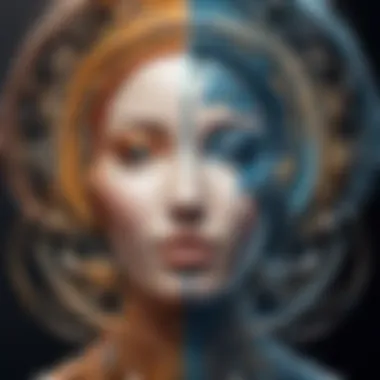
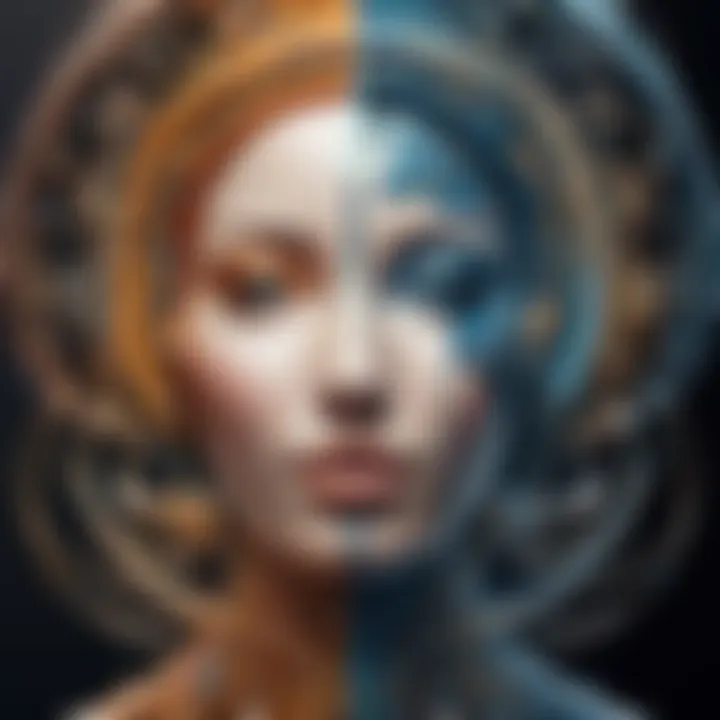
The benefits of utilizing machine learning are profound. For instance, systems can mimic the style of renowned artists or create unique artistic expressions based on user inputs. Algorithms like convolutional neural networks (CNN) are particularly effective for this purpose, as they are adept at image recognition and generation tasks. Consequently, ML technology allows for the production of highly personalized and diverse art forms.
Computer Vision Techniques
Computer vision techniques bridge the gap between text and visual output. This technology empowers machines to interpret and understand visual information. By using computer vision, systems can analyze the images produced from textual descriptions and refine them to align closely with intended artistic styles.
A practical application of computer vision is in image processing. Techniques such as object detection and segmentation help in ensuring that the generated art remains coherent and visually striking. Furthermore, with the integration of machine learning in this field, computer vision can create art that evolves based on user interaction. This dynamic quality enhances the user experience, as they can witness the growth of their artistic outputs.
"The integration of natural language processing, machine learning, and computer vision is revolutionizing the way we understand creativity and art."
In summary, the technological foundations of text to art incorporate various methodologies that allow for the effective translation of language into visual representations. Each component—NLP, machine learning, and computer vision—plays a distinct yet interconnected role in achieving this innovative convergence.
Key Platforms and Tools
Understanding the key platforms and tools available in the realm of text-to-art technologies is essential for grasping their significance and potential applications. These tools serve as the bridge between textual information and visual representation, allowing users to harness the power of language to create art. Their importance extends across various domains such as graphic design, advertising, and education, where the ability to visualize textual ideas can lead to innovative outcomes.
Overview of Existing Software
A variety of software solutions facilitate the conversion of text to art. Each of these tools comes with distinct features tailored for different audiences and purposes.
- DALL-E: Developed by OpenAI, DALL-E generates images from textual descriptions. Its ability to understand complex language structures makes it a powerful tool for artists and designers.
- DeepAI Text to Image API: This API allows users to create images simply by inputting text. It is user-friendly and widely accessible for developers looking to integrate this function into their projects.
- Artbreeder: Although primarily an image manipulation tool, Artbreeder offers functionality to blend different styles based on textual input, fostering a collaborative form of digital art creation.
- Runway ML: This platform combines machine learning with art, allowing users to create compelling visuals from textual prompts effortlessly. Its versatility is appealing for both amateurs and professionals.
These tools vary in complexity and intended use. Some cater to experienced artists, while others are more targeted towards casual users, ensuring accessibility.
Comparative Analysis of Tools
When comparing these software solutions, several factors come into play that can influence user choice:
- Usability:
- Output Quality:
- Customization Options:
- Community and Support:
- DALL-E is known for its ease of use but demands a good understanding of how to craft effective prompts.
- Runway ML offers a more comprehensive toolkit, albeit with a steeper learning curve.
- The quality of images generated can differ significantly. DALL-E tends to produce high-resolution images with intricate details.
- DeepAI is effective for quick generation but might lack the finesse found in more advanced platforms.
- Artbreeder allows users to manipulate existing images significantly, providing a unique creative outlet.
- Conversely, Runway ML focuses on generative processes that rely on AI interpretations rather than extensive user adjustments.
- Some platforms have robust communities, such as Reddit groups focused on DALL-E and Artbreeder, where users share tips and tricks.
- Platforms like Runway ML are heavily integrated into professional workflows in the creative industry, making them desirable for collaborative projects.
Ultimately, the choice of tool often depends on the user's specific needs and technical capabilities. As text-to-art technologies develop, the key platforms will continue to evolve, making it crucial for users to remain informed about new advancements.
The Creative Process
The process of turning text into visual art is a multifaceted journey that intertwines creativity, technology, and human expression. Understanding this process is crucial for grasping how language can inspire artistic endeavors. The creative process involves several stages, from initial inspiration to the final audiovisual result. Each step comes with its own set of challenges and opportunities, shaping the way we interpret and utilize text-to-art technologies.
From Inspiration to Creation
The initial phase of the creative process is about finding inspiration. Text-based prompts can trigger imaginative ideas, allowing artists and technologists to explore a wide range of concepts. These prompts may originate from poetry, prose, or even complex scientific theories. The key is to translate these ideas into visual elements. For instance, a line from a poem can evoke certain colors or shapes, which an artist uses to create a unique piece of art.
Inspiration can also be contextual. For example, the cultural background or emotional weight of a literary piece often influences how it is visually interpreted. By analyzing the essence of what is written, artists can choose styles and mediums that reflect this essence more accurately. As the process unfolds, collaboration between human creativity and machine algorithms becomes essential. Technology serves as a tool, enhancing the capability of artists to bring their visions to life. The iterative nature of creation encourages experimentation, helping to refine ideas and merge them with artistic practices.
Interpreting Textual Prompts
Interpreting textual prompts is a vital skill within the creative process. Understanding how to extract meaning from text can significantly affect the outcome of the artwork created. There are various approaches to interpreting prompts. A literal interpretation can draw directly from the text, focusing on specific themes or narratives. Conversely, a more abstract approach might explore underlying emotions and motives that the text conveys. This duality highlights the flexibility required in this process.
For efficient interpretation, artists may rely on techniques such as Natural Language Processing and machine learning algorithms. These technologies assist in analyzing text patterns and nuances, guiding artists in making creative choices. As a result, the dialogue between language and visual output becomes richer.
"The intersection of language and visual art offers a unique platform for exploring the depths of human creativity."
Ultimately, effective interpretation calls for a sensitive balance. Artists must remain mindful of the text's integrity while allowing their creative instincts to flourish. As they engage with the technology, feedback loops become essential. By combining human insight with technological capabilities, the final artistic creation can resonate more deeply with audiences.
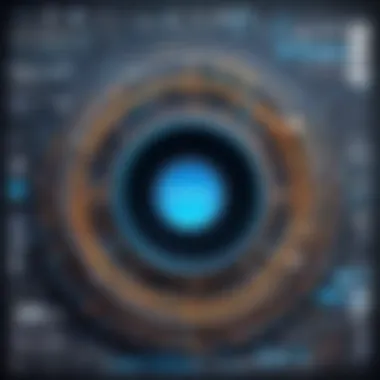
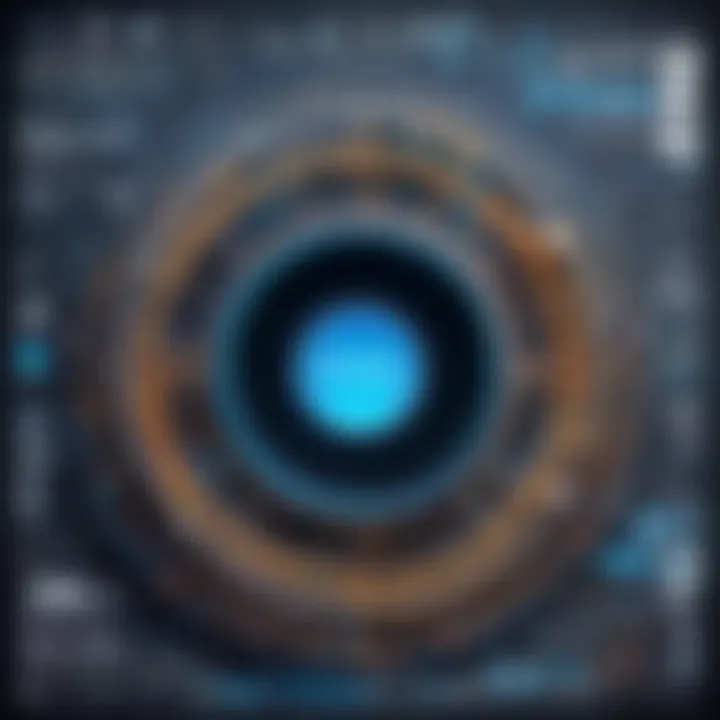
Impact on Various Fields
The impact of text to art technologies on various fields cannot be overstated. This innovation represents a convergence of linguistics and visual creativity, prompting profound changes in how we view artistic expression. Each sector experiences unique benefits and considerations as text-to-art capabilities evolve. These shifts point to new possibilities for creativity and tools that engage and redefine meaning.
Art and Design
In the realm of art and design, text to art can generate unexpected visual outcomes inspired by textual input. This practice can aid artists in exploring concepts that integrate written language within their works. Additionally, it serves as a bridge between traditional and digital art forms. Artists can create pieces that combine language elements with visual forms, thus enriching their narratives.
Benefits include:
- Enhanced creative exploration
- Access to new artistic techniques
- Collaboration between artists and technology
Moreover, interactive installations have emerged that utilize text-to-art as an interface, allowing viewers to contribute to the creative process. This builds a dialogue around what art represents and how it can be shaped dynamically through audience engagement.
Education Sector
The integration of text to art in the education sector opens doors for innovative teaching methodologies. It can aid students in comprehending complex subjects by representing information visually. The ability to transform text into images enhances memory retention and engagement. Furthermore, this technology can accommodate diverse learning styles, providing a powerful tool for educators.
Applications in education include:
- Visual aids for lesson plans
- Creative assignments that encourage artistic expression
- Tools that support language learning through visualization
These advantages make text to art a valuable resource for developing critical thinking and creativity among students. It encourages them to express ideas in multiple formats, fostering a holistic learning environment.
Marketing and Advertising
Text to art is also affecting marketing and advertising strategies. Brands can leverage these tools to create compelling visual content that resonates with their target audience. The ability to produce images based on textual prompts allows for personalized and engaging advertisements. This creativity can lead to more memorable brand experiences.
Key considerations in marketing include:
- Tailoring visuals to specific audience segments
- Generating quick content for campaigns
- Utilizing data-driven insights to guide visual aesthetics
Through the innovative use of text to art, marketers can bridge the gap between words and visuals, ensuring their messaging is powerful and evocative. This direction signifies a shift in how brands approach storytelling and design, aligning with evolving consumer expectations.
This integration of technology within critical sectors illustrates the potential of text to art in shaping contemporary practices. As these fields continue to integrate such innovations, the boundaries of creativity will expand, influencing future generations of artists, educators, and marketers.
Ethical Considerations
The rise of text-to-art technologies has ushered in a new era of creativity, but it also brings significant ethical challenges. This section explores copyright issues and the moral implications of AI-generated art, both of which are crucial for understanding the broader impact of these advancements.
Copyright Issues
Copyright is a hot topic in the space of digital creations. With the advent of text-to-art technologies, questions about ownership and intellectual property rights arise frequently. When a piece of art is generated from a textual prompt, who claims the right to that creation? Is it the person who crafted the prompt, the developers of the software, or the AI itself?
In many jurisdictions, copyright ownership is still tied closely to human authorship. This leaves AI-generated artworks in a gray area. Since artificial intelligence does not have rights, the responsibility for copyrights often lies either with the user or the creators of the algorithm.
- Case Study: Consider the situation where an artist uses a tool like DALL-E 2 to create a piece of art from a written request. The question arises: If the artwork becomes commercially successful, who gains from it? Many creators argue for their rights to benefit from their contributions, even if their input was just a series of textual commands.
Navigating these concerns requires a nuanced approach, balancing innovation with artists' rights and protections. It is vital for industry stakeholders to establish clear guidelines and frameworks that address the ownership of works created using AI technologies.
Moral Implications of AI Art
The moral implications surrounding AI-generated art are another aspect requiring careful consideration. Critics question whether or not the creations generated by AI lack emotional depth and genuine artistic intent. Human artists imbue their works with personal experiences and feelings that may not translate into an AI-generated piece.
- Concerns about Authenticity:
- Does AI art retain authenticity as a reflection of human experiences?
- Is it ethical to present AI-generated art alongside creations made by human hands as equals?
Moreover, the use of existing works to train AI models raises ethical dilemmas. If AI algorithms learn from thousands of artists' styles and techniques, does it dilute the original artists' essence? It can lead to a scenario where the authenticity of art is compromised, reducing the value associated with traditional artistry.
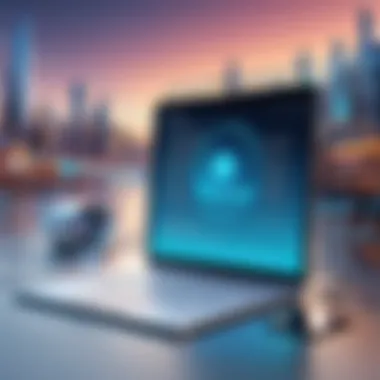
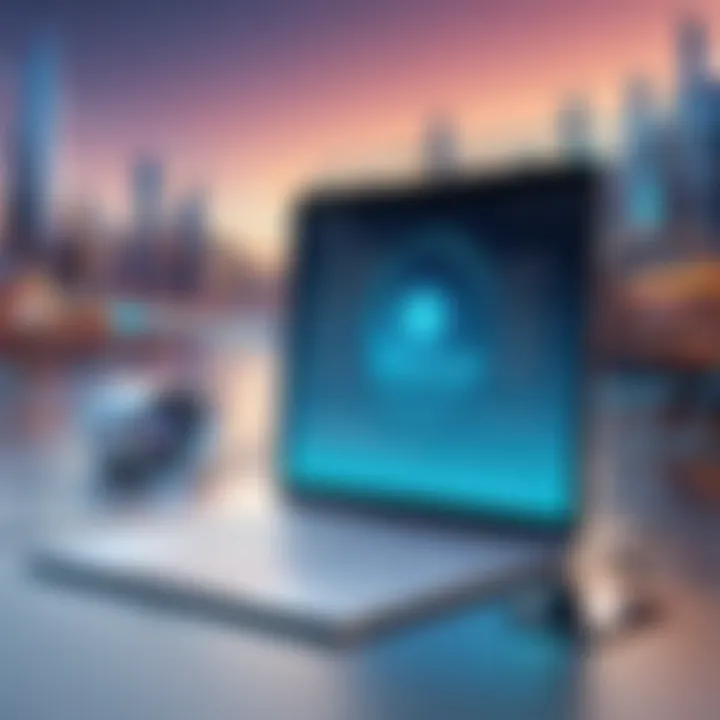
Many in the art community advocate for open discussions around these issues. They suggest that by setting ethical standards and acknowledging the place of AI in the creative ecosystem, we can appreciate technological advancements while respecting artistic integrity.
"Creating art with AI prompts a reevaluation of what it means to be an artist in the digital age, emphasizing the need for open discourse on ethical practices."
As text-to-art technologies evolve, the conversation surrounding copyright and morality will be essential in shaping a future that respects both innovation and the artistic community.
User Experience
User experience is a critical aspect when we explore the realm of text-to-art technologies. The effectiveness of these platforms relies heavily on how users interact with them. A seamless user experience ensures that the creative process is enjoyable and productive. Several factors are pivotal in enhancing the user experience in text-to-art applications:
- Interface Design: Simple and intuitive interfaces allow users to navigate easily through various tools without frustration. Clarity in design can encourage exploration and experimentation.
- Feedback Mechanisms: Providing immediate feedback to users enhances engagement. Users want to see how their text prompts translate into visual forms, and instantaneous generation keeps interest alive.
- Customization Options: Allowing users to modify parameters like color, style, and aesthetic can personalize the experience, thus catering to individual artistic preferences.
- Educational Resources: Tutorials and guides help users understand how to maximize the potential of the tools. This can lead to more effective usage and a deeper understanding of the technology behind text-to-art.
Accessibility of Text to Art Technologies
Accessibility is essential in making text-to-art technologies available to a wider audience. Both physical and cognitive barriers must be considered to ensure that diverse user populations can engage with these tools. Important factors include:
- Platform Availability: Ensuring that the tools are accessible on various devices, including smartphones, tablets, and desktops, allows users from different backgrounds and with different devices to participate.
- Language Support: Offering multiple language options can widen the reach of these technologies, enabling users from different linguistic backgrounds to express themselves through art.
- Inclusive Design: Tools should accommodate users with disabilities. This can include voice commands for those with limited manual dexterity or text-to-speech capabilities for users with visual impairments.
- Low Bandwidth Functionality: Many users may not have access to high-speed internet. Developing solutions that require less data can make text-to-art technologies more accessible to users worldwide.
User Preferences and Behavior
Understanding user preferences and behavior is vital for improving text-to-art platforms. By analyzing how users interact with these systems, developers can tailor features to enhance engagement:
- Preference Studies: Conducting surveys and usability tests provides insights into what users want. Preference for certain styles, genres, and functionalities can guide future developments.
- Behavior Tracking: Monitoring how users engage with the tools, such as common inputs and outputs, reveals patterns. This can help in improving algorithms to generate more relevant artworks.
- Community Feedback: Engaging with user communities on platforms like Reddit allows developers to receive direct input from those using the technology. This connection can guide improvements based on user stories and critiques.
The intersection between text and art holds immense potential. As technologies improve, understanding user experience will be fundamental in shaping the future of this evolving field.
Future Trends
As the intersection of language and creativity evolves, the topic of future trends in text to art technologies gains significance. Understanding these developments is crucial for artists, technologists, and educators. It shapes how we perceive the blending of different forms of expression and communication.
Potential Advancements in AI
In the realm of artificial intelligence, potential advancements are both exciting and transformative. AI technologies are advancing rapidly, leading to improved algorithms and greater efficiency. Here are some key highlights:
- Improved Natural Language Understanding: Future systems are likely to better comprehend nuances in language. This enhancement will allow for more precise visual representations based on textual input.
- Greater Artistic Styles: AI might develop the capability to emulate various art styles more accurately, catering to diverse artistic preferences and cultural backgrounds.
- Real-Time Interaction: With faster processing times, future text to art systems could facilitate real-time interactions. Users might create art in a collaborative manner, producing instant visualizations from shared text input.
- Personalization and Customization: More advanced algorithms will likely enable more personalized experiences. This development would allow users to influence styles and adapt to individual artistic tastes.
"The real revolution will be in the accessibility of art through technology, enabling creators from all backgrounds to express themselves."
Influence on Art Movements
The influence of text to art technologies on contemporary art movements cannot be overstated. As these tools gain traction, they are reshaping traditional notions of creativity in significant ways:
- Digital Integration: The fusion of AI with artistic disciplines encourages hybrid art forms. Digital canvases, once niche, are moving into the mainstream.
- New Perspectives: Artists are exploring language and communication in novel ways. This shift opens discussions about meaning and interpretation in visual art.
- Democratization of Art Creation: With a wider range of accessible tools, individuals who may not consider themselves artists can participate in creative pursuits. This trend encourages diverse voices and ideas in the art community.
- Cultural Dialogues: As text to art technologies gain global acceptance, they reflect cultural dialogues from various regions. This expansion can lead to a broader understanding of artistic expression across boundaries.
The future of text to art is poised to redefine how we engage with language and visual creativity, offering both exciting opportunities and challenges. As this narrative unfolds, it will undoubtedly spark further discussion among tech-savvy individuals and enhance the creative landscape.
Final Thoughts
As we conclude this exploration of text-to-art technologies, it is vital to recognize their profound impact on both creative expression and technological innovation. The merging of language and visual art unfolds a rich field that goes beyond traditional methods. By understanding how text becomes visual interpretations, we acknowledge both the potential and the challenges that arise.
The Significance of Merging Text and Art
Merging text and art provides several significant advantages. Firstly, it enhances communication. A visual representation can often encapsulate ideas and emotions in a way that words alone cannot. This can help bridge gaps in understanding and inspire deeper engagement with complex topics.
- Broadening Interpretation: Different audiences may have varying reactions to the same piece of art created from a textual prompt. This diversity in interpretation enriches cultural dialogue.
- Encouraging Collaboration: Artists, writers, and technologists can collaborate more effectively. They can work together to create something that incorporates their unique perspectives.
- Exploration of New Aesthetics: The integration of artificial intelligence allows for novel artistic styles and aesthetics, pushing the boundaries of traditional art forms.
In this sense, text-to-art technologies are not simply tools; they are catalysts for innovation.
Call for Open Discussion
Inviting further discussion around text-to-art is essential for its evolution. As stakeholders in this field, including artists, technologists, and ethicists, we must explore the implications and potentials of these technologies in detail.
- Ethical Considerations: How do we navigate issues like copyright and originality in AI-generated art? An inclusive dialogue can yield valuable insights.
- User-Friendly Interfaces: Making these technologies more accessible is crucial. Community feedback can guide developments in UI and UX, ensuring that innovations serve a broader audience.
- Artistic Community Engagement: Encouraging artists to share their experiences and challenges in this domain cultivates a rich exchange of ideas.
"Engagement and discussion catalyze progress in understanding the implications of merging different forms of creativity."
In summary, the final thoughts on this topic signal a call for deeper understanding and collaborative exploration in the multifaceted world of text-to-art. The future promises exciting possibilities, but these must be approached cautiously and thoughtfully. Collectively, we can navigate this landscape to harness its true potential.



